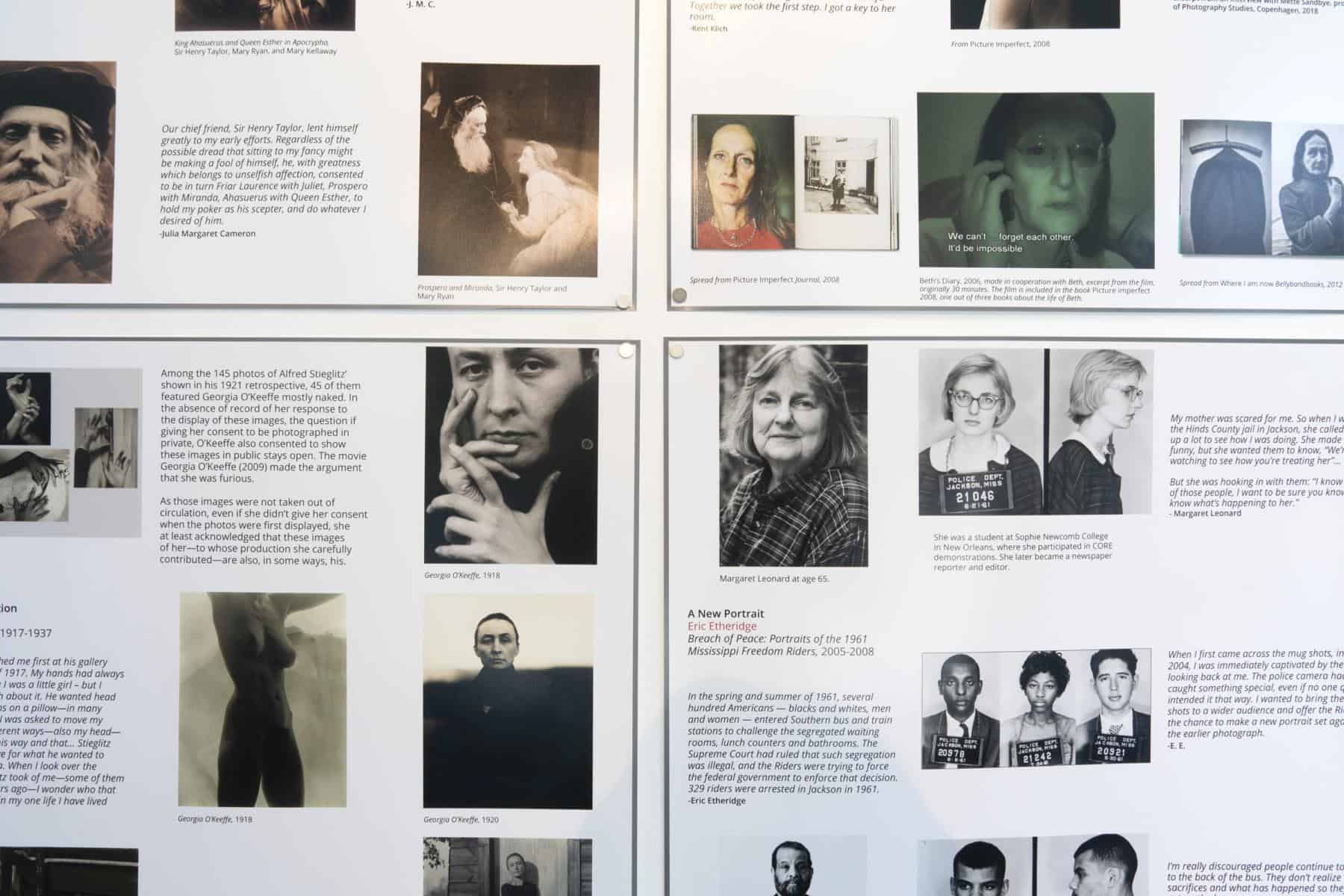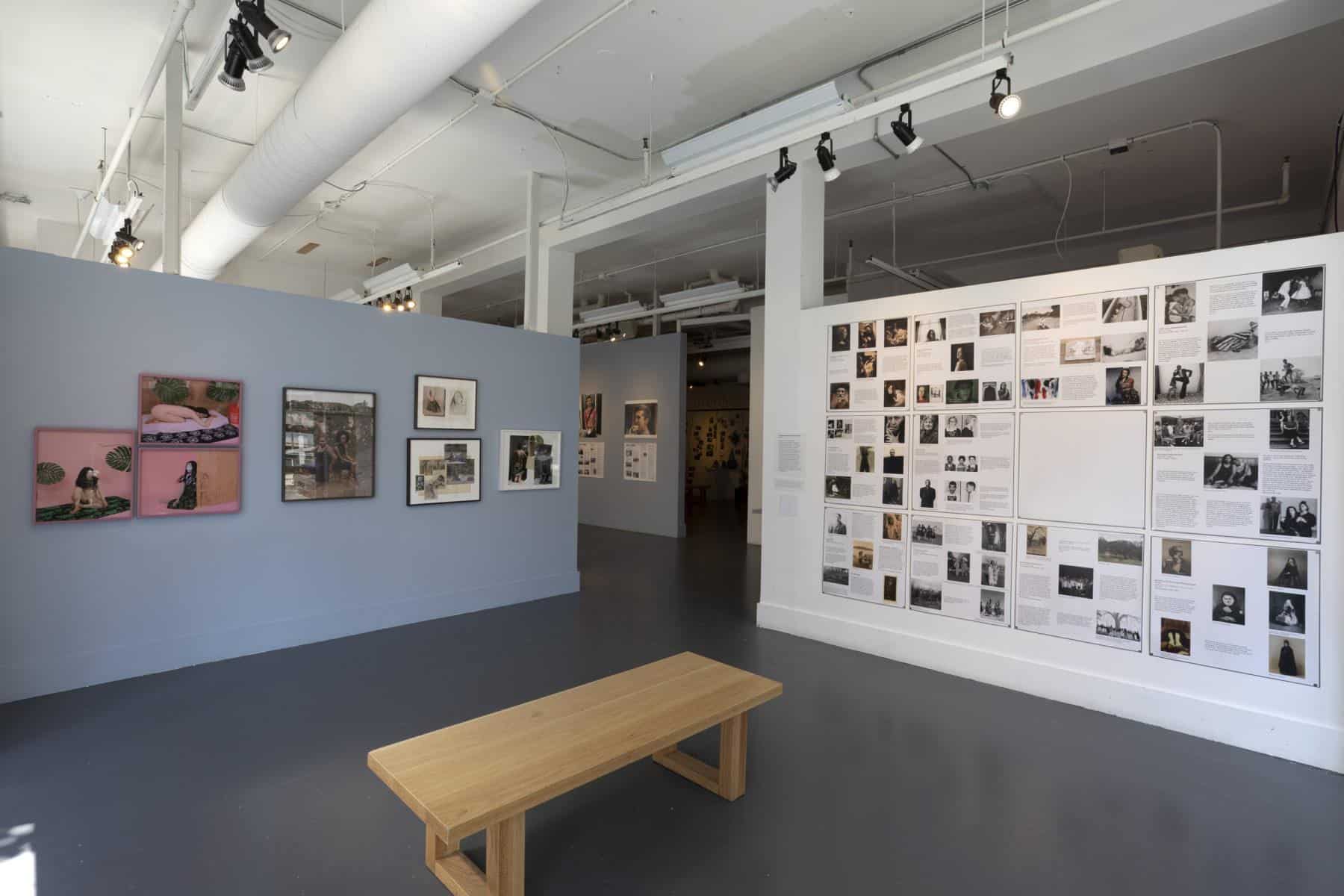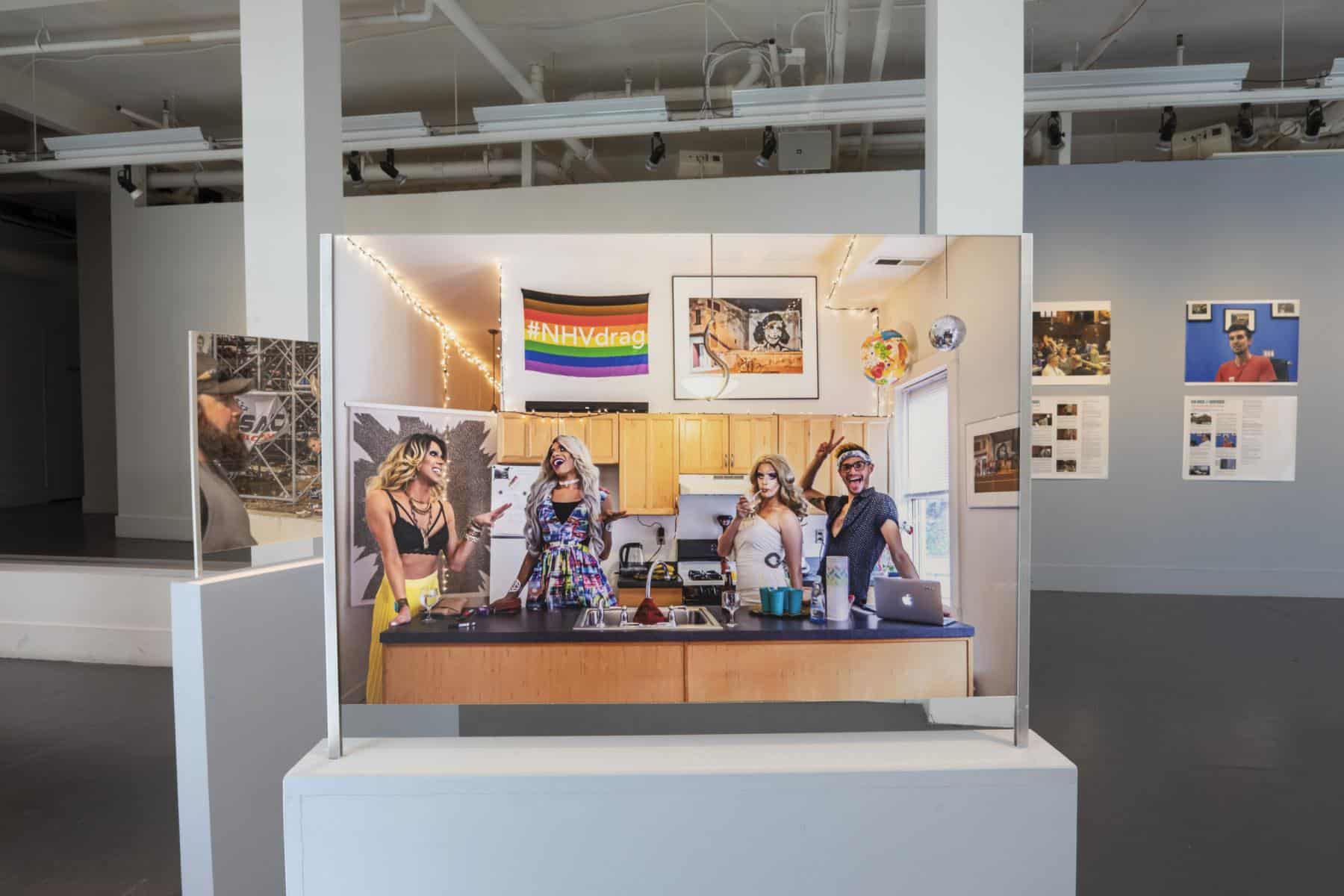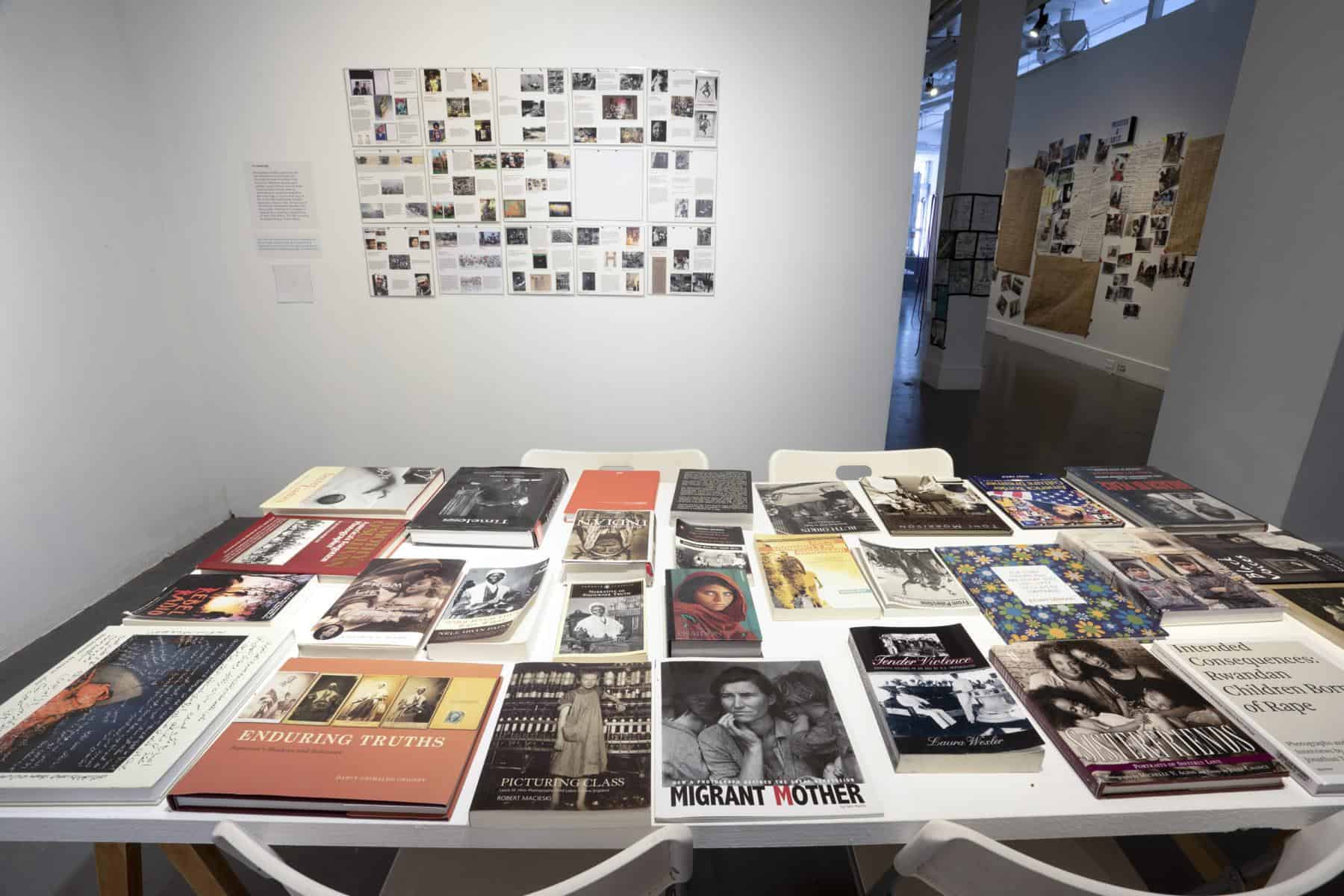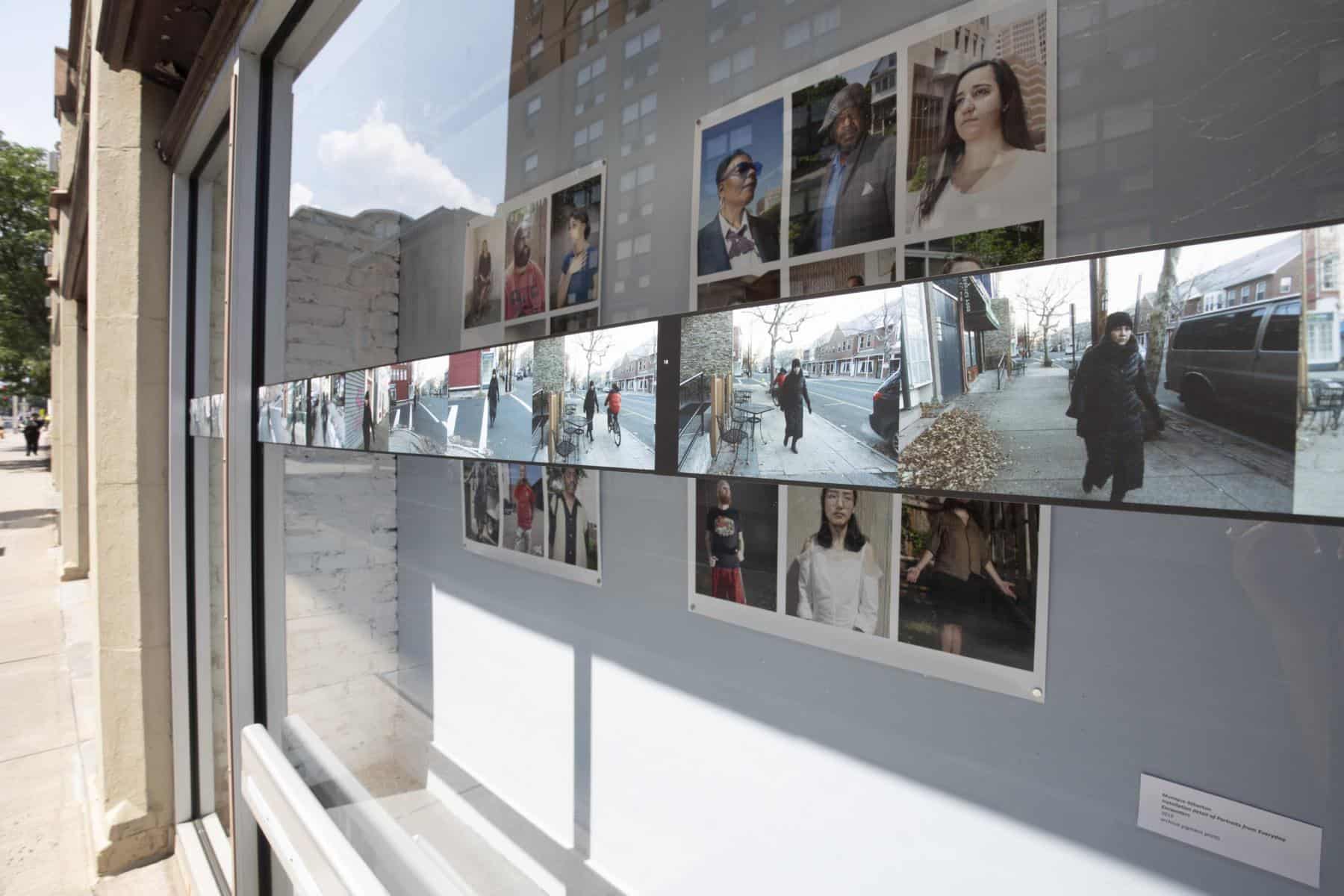
Collaboration: A Potential History of Photography
A project by: Ariella Azoulay, Wendy Ewald, Susan Meiselas, Leigh Raiford and Laura Wexler, organized in collaboration with Artspace, New Haven
July 26—September 14, 2019
Monique Atherton, Thomas Breen, Ed Gendron, Daniel Eugene, Rachelle Mozman Solano, Thana Faroq
installation view “Collaboration: A Potential History of Photography”, 2019. Photo credit Jessica Smolinski.
Collaboration: A Potential History of Photography is a research project and a pedagogical tool that explores the event of photography. This project was conceived and produced by Laura Wexler, Susan Meiselas, Ariella Azoulay, Wendy Ewald and Leigh Raiford, who worked collaboratively to study over 100 photography projects, created between 1860 and the present. Based on the assumption that a degree zero of collaboration is at the basis of the event of photography, this project explores photography through the lens of collaboration. It proposes a potential history of photography that is different from the dominant history of single photographers and their approach and techniques through a study of the material, practical and political conditions of collaboration.
The exhibition refutes the notion of the photographer as a lone actor who determines the meaning of a photographic encounter for others, and seeks to make visible the various relationships, exchanges, and interactions between the participants in the event of photography that result in tangible traces of collaboration. The projects are organized into eight themes, which include “The photographed person was always there,” “When a Community is at Stake,” and “Photography Preserves Sovereign History as Incomplete,” among others.
Artspace will serve as the fourth stop for this project, and will be the first venue to include original works of art next to this body of research. We will feature 6 projects by Monique Atherton, Thomas Breen, Ed Gendron, Daniel Eugene, Rachelle Mozman Solano, Thana Faroq and their respective collaborators, who will each be named. This exhibition mixes a range of photographic genres and traditions– street photography, photojournalism, portrait photography, family photography, urban photography, fine art photography and war photography, without calling attention to their differences to eradicate the hierarchies used to privilege certain genres over others, and more importantly, to focus on the relationships that are formed during the photographic event. The variety of approaches acknowledge how such collaborations might result in positive life-affirming, liberating and idyllic exchanges, but also darker coercive, offensive and even violent exchanges. By showing the ways in which collaboration can happen during or after the moment a photograph is taken, the exhibition delivers a message of hope. Harmful collaborative acts might find reparation, repair, reconciliation and healing through a retrospective return.
Recognizing social media as the one of the most widely used and pervasive platforms for collaborative image making today, Artspace is dedicating wall space for the display of photographs that are posted on our Instagram page during the run of the show. As visitors walk through the galleries, they will encounter a series of questions with invitations to post their responses via a designated hashtag. We will print these images at the beginning of each week and add them to our walls. Over time, the gallery will support an archive of photographs and captions that follow the unpredictable and often personal nature of the photographic encounter online.
Collaboration: A Potential History of Photography is made possible thanks to support from Public Humanities at Yale, The Photographic Memory Workshop at Yale, and Women’s, Gender & Sexuality Studies Program at Yale.


